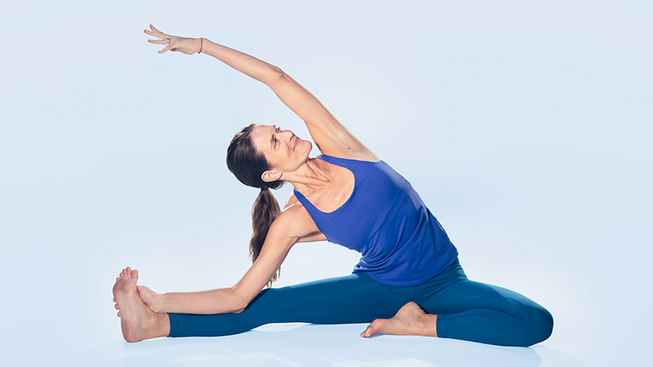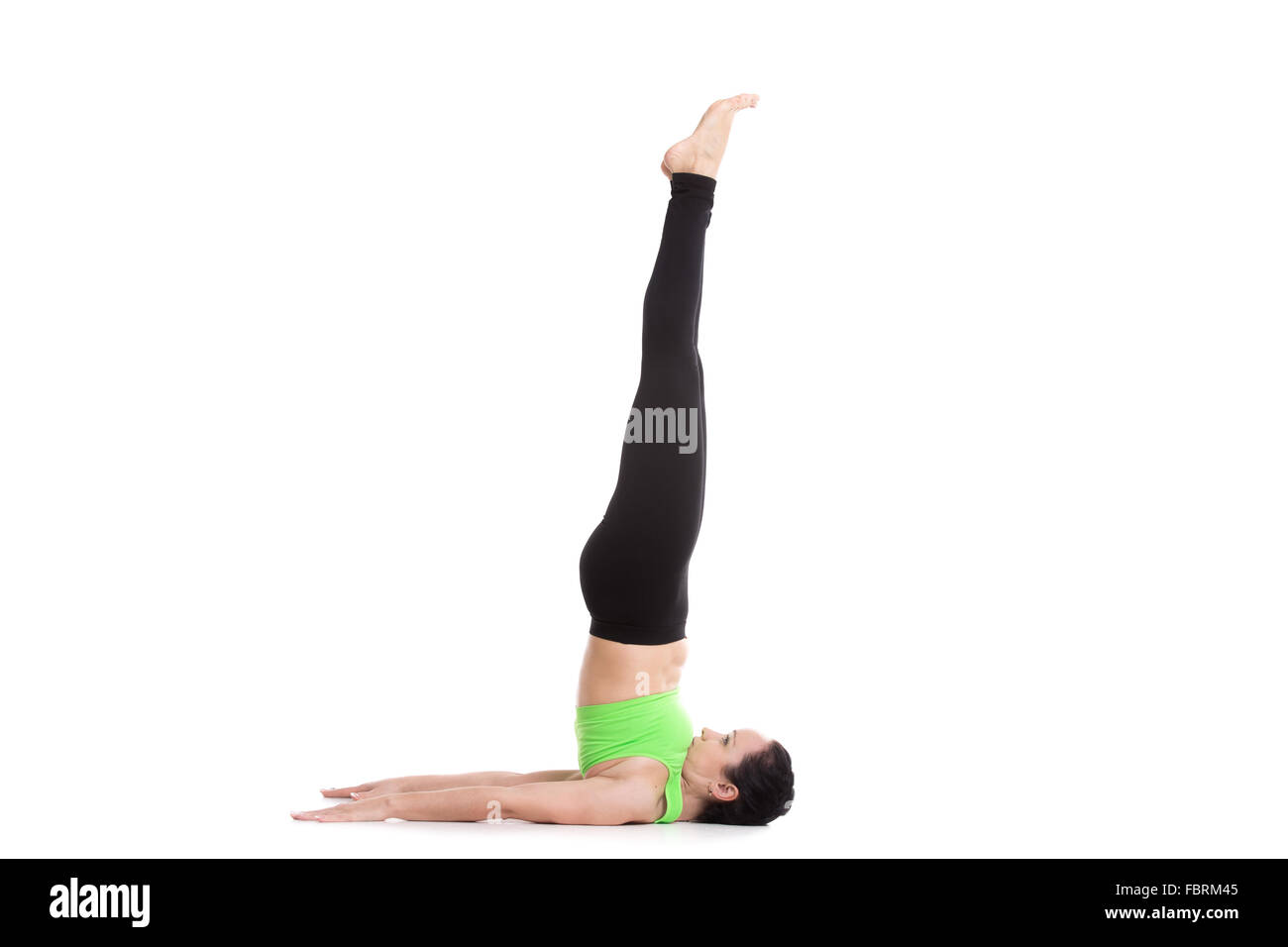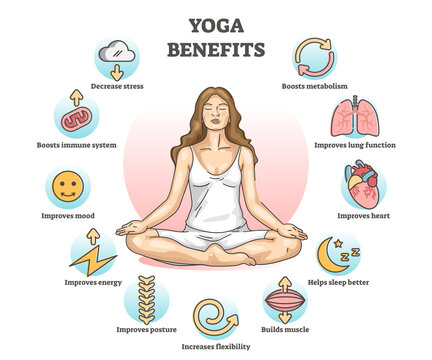
Yoga isn't only for athletes. There are many other benefits. Yoga can help with chronic conditions such as diabetes, high bloodpressure, and high cholesterol. Yoga poses can be beneficial for cardiovascular health. They also increase circulation and reduce stress. Find out more information about yoga and how it affects your heart health. These are just some of the many benefits yoga offers for your heart. Keep reading to discover how yoga can help you prevent heart disease and stay healthy.
Pranayama (a series of exercises that allow for immediate relaxation) is one of Yoga's most important components. Anulom Vilom is a technique that cleanses the nerves and Alternate Nostril Breathing is one example. Yoga for Heart should only be practiced under the supervision of an expert. Also, you should eat a healthy and balanced diet.
Yoga's ability to reduce stress is another key benefit. While many believe yoga can prevent or reverse heart disease and other benefits, others argue it doesn't. Regardless of whether you choose to practice the traditional forms of yoga or an alternative approach, it is important to follow the recommended sequence. The British Heart Foundation recommends that you do five to six yoga asanas daily. The best postures are the ones that focus on relaxing the mind and body.

Yoga has a second benefit: it improves your cardiovascular health. By reducing inflammation and promoting better circulation, it has a positive impact on your cardiovascular health. Exercise is essential for good cardiovascular health. You will reap the benefits if you are able to exercise for just a few minutes per day. Even if you don’t get to exercise every day, don’t despair. This is important for a healthy and happy heart.
Research has shown that yoga can improve LVEF and lipids as well as hyperglycemia. It also reduces the risk of developing high blood pressure or atrial fibrillation. For this reason, you should try yoga to improve your heart. It is possible to improve your heart health by practicing yoga. However, you must be aware of the dangers associated with this exercise.
Yoga can help you lower stress levels. Lower stress levels can be beneficial for your cardiovascular health. Yoga is a wonderful way to relax and decrease stress. However, it's important to keep fit and follow the directions of a certified yoga instructor. You'll be more likely keep a regular practice. Even if you just do it for a few short minutes every day, it can make a huge difference to your heart health.
Yoga has many health benefits. It can improve your cardiovascular health. Yoga reduces your blood pressure. It also improves your heart endurance and efficiency. Yoga can also lower your blood pressure. Yoga is an excellent way to keep your heart healthy. It will enhance your overall well-being. It's worth it! Don't delay in starting to practice yoga. It will be a surprise how quickly yoga can improve your health.

According to the American Heart Association, 30 minutes of moderate to vigorous physical activity five days a week is recommended. Yoga will help improve your cardiovascular health. Moreover, you'll also be more relaxed, which will reduce stress. It can also help you keep your blood pressure under control. Yoga practice will increase your energy. This is one of the benefits of a healthy heart. Yoga can make you feel calmer, which will allow you live a more healthy life.
Other benefits of yoga include reducing stress, insomnia, and depression. It can also relieve anxiety and depression. A 2004 study revealed that regular yoga sessions reduce depression symptoms in mildly depressed patients. Study participants who did yoga regularly reported a decrease in stress, which resulted to a better mood and less fatigue. It also showed a reduction in stress hormones which was a huge benefit to the study. Although yoga's benefits are obvious, there are other aspects to your life that can benefit from it.
FAQ
What is a good 7-day workout schedule?
A seven day exercise program should include cardiovascular training (running or biking), strength exercises (using freeweights, weight machines) and one flexibility/core workout. Each activity should be performed at least once each week. The total time for each session should not exceed 45 minutes.
Cardiovascular Exercise: Running, Biking, Swimming
It is important to complete at least 60 minutes of cardio per week. Try to do 75 minutes per semaine for the best results. Cardio exercise can stimulate blood flow and increase muscle growth.
Strength Training
Cardio exercises focus on the heart and lungs while strength training targets muscles and bones. Strength training can help you burn calories even when you're not working out.
Flexibility & Core Workouts
You can strengthen your entire body by strengthening flexibility and core exercises. Yoga and Pilates are both excellent choices.
Do I have the obligation to exercise every day or just on occasion?
No! Do at least 30 minutes of moderate intensity physical activity five days a week. This means that you should be able to walk fast enough to feel slightly out of breath, or bike hard enough to sweat.
How Metabolic Health is Key to Aging Well
Today's people live longer than ever before. However, people are getting sicker as they live longer. While medical science has made incredible advances, it's becoming increasingly obvious that the current approach is not working.
We have to change how we see health and aging. We have to start looking at metabolic health - not just weight loss but overall wellness - as the key to healthy aging.
Your metabolism must be strong and healthy to ensure you live an active lifestyle for many years to come.
There are many ways you can improve your metabolic health. One of those ways is to incorporate these 7 foods into your diet:
-
Resveratrol is a component of blueberries that has been proven to improve cellular longevity. They are rich in antioxidants as well as vitamins C & E.
-
Pinto beans and lentils are great sources of fiber and plant-based proteins. These nutrients help keep blood sugar levels steady so they won't spike and crash.
-
Broccoli has sulforaphane. It has been proven to protect cells from DNA damage. It might even slow down the progression of cancer.
-
Chia Seeds contain high levels of fiber and omega-3 fat acids. They are high in protein and antioxidants. All of these nutrients help promote heart health, brain function, and gut health.
-
Green Tea is rich in polyphenols known as catechins. Green tea catechins have been shown to reduce bone fractures, heart disease, cognitive decline, diabetes risk, and other health issues.
-
Salmonis one of the best sources of lean protein, low in saturated fat, and packed with vitamin D.
-
Walnuts are rich sources of omega-3s and antioxidants, such as alpha lipoic (ALA). ALA helps boost energy production and protects against inflammation.
Is it true that kidney stones can be caused by overeating protein?
Protein is essential for healthy bones and tissue. But consuming too much protein can lead to calcium excretion through urine. In turn, this can result in kidney stones.
It is important to remember that not all people get kidney stones from eating more than 2g protein per kilogram (2.2lbs) of body weight. Some people can eat high amounts of protein without getting kidney stones.
By being careful with your sodium intake, you can prevent kidney stones. Sodium regulates the water balance of the kidneys. High levels of sodium are linked to a greater risk of developing renal stones.
You can also reduce your intake of proteins if you develop kidney stones. Protein accounts for about half the daily caloric requirement of most adults. You'll lose weight if you reduce your intake of protein.
If you do decide to eat more protein, don't go overboard. Do not eat more than 20% of your daily calories from protein.
What's the best workout for men over 40?
For older men, the best workout usually gives them more energy and improves their stamina.
It is important to note that most people over 40 experience a loss of testosterone in their bodies, resulting in lower sex drive.
You can still exercise, however. Numerous studies have shown that aerobic exercise can increase testosterone levels in certain men.
If you are looking to improve your sexual performance, an aerobics workout is the best option.
Does weightlifting burn more fat than other forms of exercise?
Weight lifting does burn fat faster, but only if you combine it with cardio workouts.
For the best results of weightlifting, do it after cardio exercises.
Weightlifting is a good way to lose weight. It increases your heart beat and oxygen consumption.
If you don't mix it with cardio, your body won't notice significant changes.
Statistics
- 10 pounds in a month is likely during a lean bulking phase, especially for beginners. (muscleandstrength.com)
- Candidates and applicants must pass all four tests at 70% (minimum level) to graduate from Basic Deputy U.S. Marshal (BDUSM) Training. (usmarshals.gov)
- Cardmembers earn 5% Back at Amazon.com with a Prime Credit Card. (amazon.com)
- The PRS enabled risk stratification for overall prostate cancer and lethal disease with a four-fold difference between men in the highest and lowest quartiles (HR, 4.32; 95% confidence interval [CI], 3.16-5.89). (pubmed.ncbi.nlm.nih.gov)
- By John Thompson Take a whopping 38% off a set of PowerBlock Pros. (menshealth.com)
External Links
How To
How does a man become fit in just 30 days?
Breaking down your fitness goals into manageable steps is the best way to reach your goals.
This is why you should make sure that you're working toward your goal every day. This could be anything from running 3km to doing 10 pushups in 5 minutes.
Consistently doing this will lead to positive results.
You must be consistent. You must persevere until your success is achieved.
What is the difference between Aerobic Fitness and Anaerobic Fitness?
Anaerobic fitness describes the body's ability not to use oxygen to perform intense physical tasks. During periods of high-intensity exercise, we use anaerobic pathways to provide enough energy to complete the task. Anaerobic pathways include glycolysis, creatine phosphate, the phosphagen, lactic acid, etc.
In contrast, aerobic fitness refers to sustaining continuous low-intensity exercise. While performing aerobic exercises, oxygen is used as the primary source of fuel for the cells. In other words: The aerobic pathway gives more energy than that of the anaerobic.
For example, if you want to run a marathon, you must first build up your aerobic capacity. If you don't focus on increasing your aerobic capacity, you will not be able finish the race.
Aerobic fitness may also be known as cardiovascular fitness. The two most commonly used methods of measuring cardiovascular fitness, are VO2 Max testing and step tests.
VO2 Max Testing
VO2 max refers to the maximum amount of oxygen (O2) used by the body during exercise. This test measures the amount O2 that the body can use when exercising.
This test can measure your cardiovascular fitness accurately. However, it requires expensive equipment and highly trained professionals to administer the test.
Step Tests
Step tests are a quick and easy way to test your cardiovascular fitness. Based on your age and weight, they involve running or walking on a track or treadmill for a specified time.
These tests are easy, inexpensive, and accessible almost anywhere. You can, for example, walk for 2 minutes on a treadmill, then rest for 1 min, then repeat the process for 20 minutes. Then, stop. Throughout the session, your heart rate should be within a certain range.
This method is known as the "Bruce Protocol". Bruce, himself a runner, created this protocol after realizing that he would not feel his heart rate increase when running longer distances.